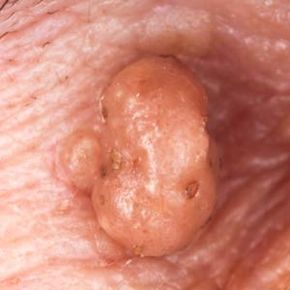You can relax: That old story about getting warts from kissing a frog might just be one of the oldest examples of an urban legend. Your kissing habits have nothing to do with wart formation. You can't get warts from handling a toad, either. Let's take a look at what common warts are, where they come from and why they're so hard to get rid of.
A common wart is a noncancerous growth. Common warts are typically found on the hand -- on the back of the hand, around fingernails and on the fingers. They can also be found on elbows and knees. These warts are hard, round bumps with surfaces that feel rough to the touch. Their size is usually between 0.08 and 0.39 inches (between 2 and 10 millimeters) [source: Merck]. They might be the same color as your skin, or they might be white, grayish-brown, pink or tan. You might see black dots when you look at a common wart. These seedlike black dots lend another name to common warts: seed warts [source: American Academy of Dermatology].
Advertisement
Common warts aren't dangerous. They'll go away if they're left untreated, but this can take anywhere from months to years. Moreover, warts left untreated on children are likelier to clear up than ones on adults [source: WebMD]. Some people want to get rid of their common warts because they don't want to look at them. Others want them gone because they're a nuisance -- perhaps the wart causes pain when a person swings a golf club or holds a pencil. Sometimes, common warts begin to multiply, and in that case, treatment is especially desirable.
Read on to find out why some people get warts easily and others never do.
Advertisement


